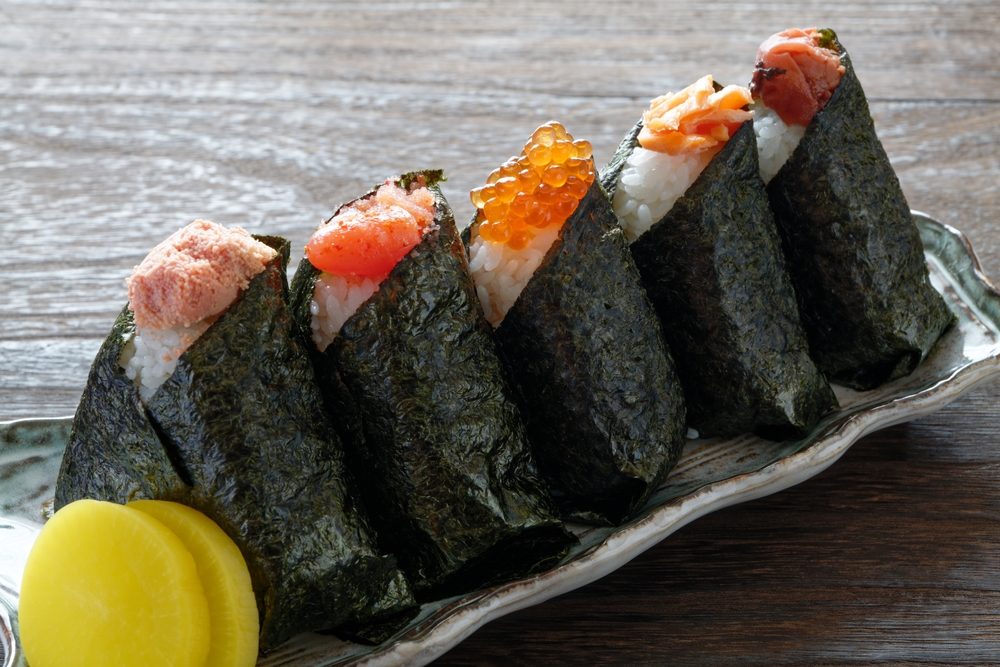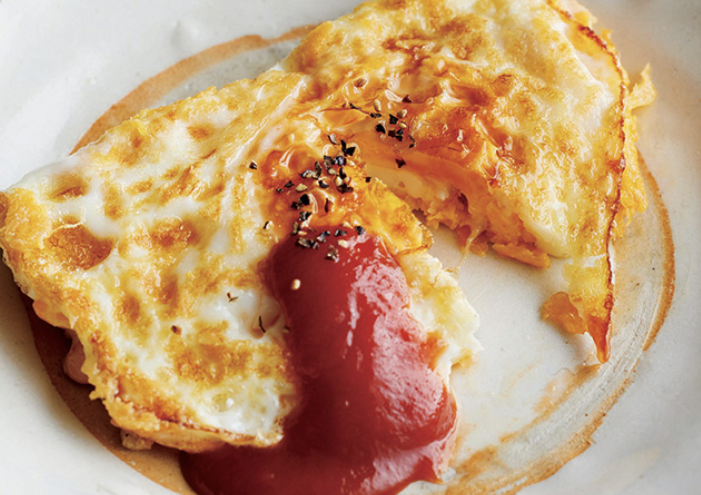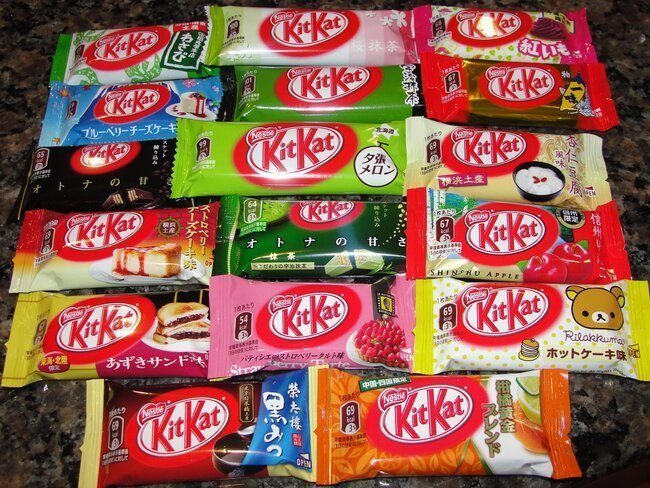Onigiri, more well known in America as rice balls, is a typical Japanese snack. While it may be challenging to track down in America, it is common to find almost anywhere in Japan. From convenience stores to regular grocery stores, to your coworker’s lunch bag, to a child’s lunch box, they are staples in Japan.
This might be compared similarly to the American sandwich. It’s considered easy, quick, and nutritious. Many different types of onigiri vary widely in flavor and form.
If you’re looking to munch on some onigiri sometime in the future, here’s a complete guide to rice balls.
What Is Onigiri?
Onigiri is quite literally a ball of rice. Although most often, it can be found in a triangular shape. Onigiri is made by using sticky rice to form a dense ball of rice. It can be as simple as plain rice or can have different flavors sprinkled in it. Some common ones include salt or sesame seeds. The flavors can present themselves in multiple ways. They can be sprinkled throughout the rice, concentrated in the center of the ball, or just placed on the outside for a bit of texture on the outside of the rice ball.
While white sushi rice is common, it doesn’t necessarily have to be sushi rice. It’s’ also important to note that onigiri should not be confused with nigiri – a basic form of sushi with just rice and fish.
Often, onigiri will be wrapped in dried nori seaweed, which has several health benefits. This will give your rice ball a little handle to hold on to so that your fingers do not get sticky and so that they do not ruin the integrity of the rice ball. It will also provide a bit of a crunch to break up the texture of the rice. However, this is not necessary for good onigiri.
Why Is It a Rice Ball If It’s a Triangle?
While it might seem like a ball is the easiest method of creating onigiri, several shapes can be done. However, the most common one that people see is the triangle-shaped onigiri. This has become the distinct shape for these treats. It has become recognizable in movies and pop culture and has its notoriety.
So why a triangle? There are many different theories about why onigiri is shaped like a triangle. One such theory is that in historical times, people built rice balls in the shape of the mountain where the gods existed. Forming their rice balls in this shape was thought to bring good luck.
But these are not the only shapes! You may find round ones, thin ones, oval ones, and even grilled onigiri! All of these can either be formed by hand, or you can even purchase a mold to shape the perfect triangle. These can be found online or in Asian grocery stores.
Onigiri and Its Many Perks
Onigiri is one of the most accessible foods. It is capable of being vegan, vegetarian, pescatarian, and more! It’s accessible to young children since it’s very plain but also delicious and filling. It’s also straightforward to make, even for novice cooks. It’s also an excellent food to make efficiently.
You can throw rice in a rice cooker and allow it to cook. While it’s cooking, you’re able to do a number of other tasks. Then, while it’s cooling, you can continue with whatever you were doing before. Finally, forming the balls should take no more than a few minutes.
It’s highly satisfying despite its small size. You will likely find yourself full after eating a rice ball or two. The best thing, however, is that there are no limitations. It is super customizable; therefore, it can be created into what you need it to be.
Different Ways to Fill Your Onigiri
You can mix and match to find flavors that you like for your onigiri. Some endless different combinations and ingredients can be used for rice balls. However, here are some common ones.
Tuna Mayo
Tuna and mayonnaise are one of the most common fillings for rice balls. It is as simple as mixing some canned tuna with some mayonnaise. However, Japanese mayonnaise is also known as Kewpie mayo, which has a slightly different flavor from American mayonnaise. If you wish to make tuna mayo rice balls, it may be worth stopping by an Asian supermarket to see if you can pick up some Kewpie mayo. This will enhance the flavor of your rice balls.
Okaka
This is a little more flavorful and can be a new set of flavors for someone who hasn’t experienced traditional Japanese flavors. This one preserves particularly well since it combines dried bonito flakes and soy sauce.
If you’re unfamiliar with bonito flakes, these are essentially smoked and fermented flakes of tuna. They can be a little more concentrated in flavor than regular tuna, though.
Takana
This is pickled leaf mustard. Often, this will be chopped up and mixed with the rice. Usually, it isn’t found as a filling in the center of the rice. This can be tangy and hearty in a rice ball.
There is even a spicy version of this pickled leaf mustard for spice lovers. This can serve to add a little kick to your rice balls.
Mentaiko
This is another great one for people who love spicy food. This is spiced cod roe – also known as fish eggs. These are salty and a little fatty. The texture is incredibly unique as they practically dissolve on your tongue.
This can also be paired with takana nicely as well if you wish to mix ingredients.
Sekihan
This includes red beans. Often, you may find red beans or red bean paste in different types of Japanese buns. However, it is also a delicious ingredient used in rice balls. Generally, you should use glutinous mochi rice for sekihan. This will make sure that your rice sticks together more.
Sekihan is typically a little sweeter than the savory rice balls you may see.
Tenmusu
Tenmusu is a little more complicated as it contains tempura. It doesn’t have to be any particular tempura type, but some common ones include shrimp tempura and prawn tempura. This can undoubtedly be a little more filling as you’re adding some protein to the rice ball as well.
Bakudan
Bakudan onigiri is a fun treat for all ages. Typically, this type of rice ball is made in a rounded shape and is entirely covered in seaweed. This appeal is that you cannot see what the filling is inside. Therefore, eating the rice ball is a more exciting experience as you are unsure of what you will be getting. These can be filled with almost anything from Japanese fried chicken to boiled eggs or any previous fillings mentioned.
This also creates a fun little surprise for young children because they don’t know what they’re getting until they strike the jackpot in the middle.
Nikumaki
Nikumaki is entirely different as it turns the idea of a rice ball on its head. This rice ball is tightly wrapped with meat instead of seaweed or anything else. It’s covered in a sweet sauce as well. This makes this form of rice ball a little bit more complicated and, therefore, a little bit more maintenance when it comes to packing it for a boxed lunch or making it in advance.
Salmon
Adding a little bit of cooked, dried, salted, or smoked salmon to your rice ball can give it a perfect amount of flavor. Since there are so many different options for salmon additives, you could even try several and never get bored!
Umeboshi
Another common ingredient is pickled ume, also known as pickled sour plum. This is quite salty and can be pretty intense for someone who’s never tasted the flavor before. If you are new to pickled sour plum, be sure to rinse the plum in water before putting it into your rice bowl, as this can make the flavor a little bit milder.
Shio Kombu
Shio Kombu quite literally means salted kelp. It is dried and preserved so that it is chewy when you first bite it. However, when you add it to the rice, the salty umami-filled exterior melts into the rice. It gives it a delicious and unique flavor. You can order shio kombu online or at an Asian supermarket.
Miso Onigiri
Miso is used not only as a filling for onigiri but can sometimes be spread over onigiri and fried or roasted. This can give the rice an outside coating of flavor that can also add some crispiness as well.
Onigiri on TV
Onigiri has found its way into lots of Japanese media and culture. Most notably, onigiri was seen as a fun adventure snack in many different animes. This is very convenient for anime writing, as the characters are often on grand adventures and don’t have time to stop for food, groceries, or ingredients, or they don’t have access to cooking supplies. Therefore, rice balls are the perfect solution to staying full on their big adventures.
This has even made its way into American meme culture as the snack was featured in an episode of Pokemon, where a character eats a rice ball. The meme comes from when the American dub chose to say “jelly donut” instead of a rice ball, even though viewers could tell it wasn’t a jelly donut the character was enjoying.
The History of Onigiri
Onigiri has a long history. It is such a classic staple in Japanese cuisine that it almost seems like it’s always been there. Something so simple, tasty, and easy to reproduce makes an obvious choice for staple food. However, rice balls go back as far as the 11th century. Researchers were able to find diary entries that mention people eating rice balls.
Rice balls were also a notable food among samurai. They were known to store rice balls wrapped in bamboo sheaths. This made for a quick meal during very tumultuous times during the war.
Rice balls were generally either plain or flavored simply with salt. In early times they were even more straightforward. Even using seaweed wasn’t common until later periods.
When Was the First Filling Added?
Only around 1221 was what was considered the first filing added to onigiri. This, of course, was none other than umeboshi. Due to its almost magical powers of preventing food poisoning and having high nutritional value, the military gave onigiri with umeboshi to their soldiers. This was another significant factor in how rice balls became a standard in Japanese cooking.
Even when seaweed was added to the rice balls, they would always be soggy and flavorless by the time they were eaten. It wasn’t until 7-Eleven invented the unique coating that acted as a preservative for seaweed. This coating kept it crispy and locked in the original flavor for longer. This added that nice crunch back to onigiri.
Mass Manufacturing
Around the 1980s, a particular machine for this food was invented. This machine was capable of making the trademark triangular shape of onigiri. Several updates and improvements have been made to this machine over the years, but now onigiri is so widely accessible because it can be mass produced.
How to Make Onigiri at Home
If you’re far from Japan and unable just to grab some onigiri at a convenience store, you may desire to make some at home. Luckily, it is super simple! As stated before, these recipes can be customizable to your individual preferences for your onigiri.
Homemade onigiri How-To:
-
Rinse your rice. This will lead to it being sticky. So, instead of rinsing the rice until the water runs clear like you usually do, you should only rinse it a couple of times. For more glutinous rice, rinse fewer times.
-
Cook rice in a pot or in your rice cooker according to instructions.
-
Remove rice from your pot and spread it over a flat surface, such as a baking sheet.
-
Allow your rice to cool slightly before adding a little bit of white wine vinegar and sprinkling it with salt.
-
Either add your fillings to the rice or get them ready to be placed in the center of the rice ball.
-
You can either wear gloves or dip your hands in a bit of water and salt to prevent the rice from sticking to you.
-
Press a little bit of rice into the palm of your hand. Then place a little bit of your filling on top. Seal it by putting another pad of rice on top of that and squeezing the edges together.
-
Gently squeeze the rice ball together to form triangular sides. You may find it easier to make a ball shape if this is your first time or if you are new to making rice balls. Or you may want to use a mold.
-
Place a small strip of nori around one of the triangular sides before serving, so the seaweed remains crisp.
What About Convenience Store Onigiri?
Pre-made onigiri is a delicious and easy alternative to making it at home. If you’re in Japan or somewhere else with pre-made onigiri, you may find that it has an interesting open system.
This special wrapping ensures that the seaweed can stay crispy and the rice ball can stay fresh.
First, you will want to find the pull tab protruding from the rice ball’s outside. You will then pull it and wind it off around the onigiri so that you will now have the two plastic packaging sides.
Then you will gently remove the plastic from one side. You will see that this will then take off the inner film that separates the rice from seaweed.
Repeat this on the other side. After this, you can smooth down any strayed seaweed and enjoy your little snack or meal.
Try Onigiri Today
Whether you are in Japan, America, or another destination worldwide, it is always a good time to try a rice ball. They are comforting and familiar to many Japanese people and offer a sense of simplicity in the routine of meals. They can even act as a snack, side dish, or standalone meal! Whether you make them yourselves or purchase them pre-made, rice balls are sure to be a delicious snack.
Feel free to experiment, mix and match, and customize your onigiri to make what is most interesting for you. Feel free to try different traditional and non-traditional Japanese ingredients. You will find that this is the best way to get familiar with these rice balls.





Leave a Comment